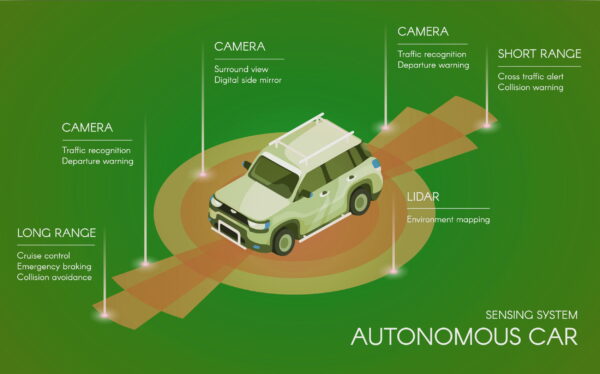The Automated and Electric Vehicles Act 2018 outlines a framework for listing automated (autonomous) vehicles for use on the UK’s roads, when they are ready. To check if your vehicle is self-driving, visit Self-driving vehicles listed for use in Great Britain.

An automated vehicle is capable of driving and navigating itself if the functions are correctly enabled and the driver is following the manufacturer’s instructions, without the driver actively monitoring it.
The difference between a true self-driving vehicle and one that just has driver assistance features are that the driver has to be responsible for the vehicle at all times, even though the vehicle might be able to take over some of the driving duties. Examples of this would be adaptive cruise control, lane keep assist, autonomous emergency braking and parallel parking assistance. Rule 150 applies for these systems – you must remain in control of the vehicle and not let yourself get distracted.
A self-driving vehicle might only be capable of part of the journey, for example, only on a well-formed road, or under certain conditions, for example, when not towing a trailer or only in daylight. While it’s driving itself, the driver does not have to be responsible for the decisions the vehicle. The driver can turn their attention away from the road and use the vehicle’s built-in infotainment features.
You must continue to follow all road rules, including that the vehicle must be road legal (taxed, insured, MOT) and roadworthy, you must be fit to drive (not under the influence of drugs or alcohol), and you will not be able use a handheld phone (with the except of situations outlined in Rule 149) as it will be impossible for police officers to tell whether you are in control of the vehicle or whether it’s self-driving at that moment.
If the vehicle comes across a situation that it’s not equipped to handle, it will give the driver warning that it needs to hand back control. The driver must not be asleep or doing something that would prevent him or her taking over control…yes, the ‘thing’ you could be doing is probably the first thing you thought of!
Functional self-driving vehicles will become more prevalent over the next decade, initially on specific routes, but eventually on a wide range of road types. There will always be parts of the journey that might not be able to be handled by the vehicle, which is why there will (for the foreseeable future) always need to be someone with the correct licence in control of it. It’s possible to think of a variety of situations that would confuse the cameras and radar used in a self-driving vehicle:
- Roadworks
- Police diversion
- Where a parking space is not clear
- Torrential rain
- Unlaned gravel roads
- Snow and ice
- Flooding
To cope with these, it’s helpful to do a bad weather driving course.
